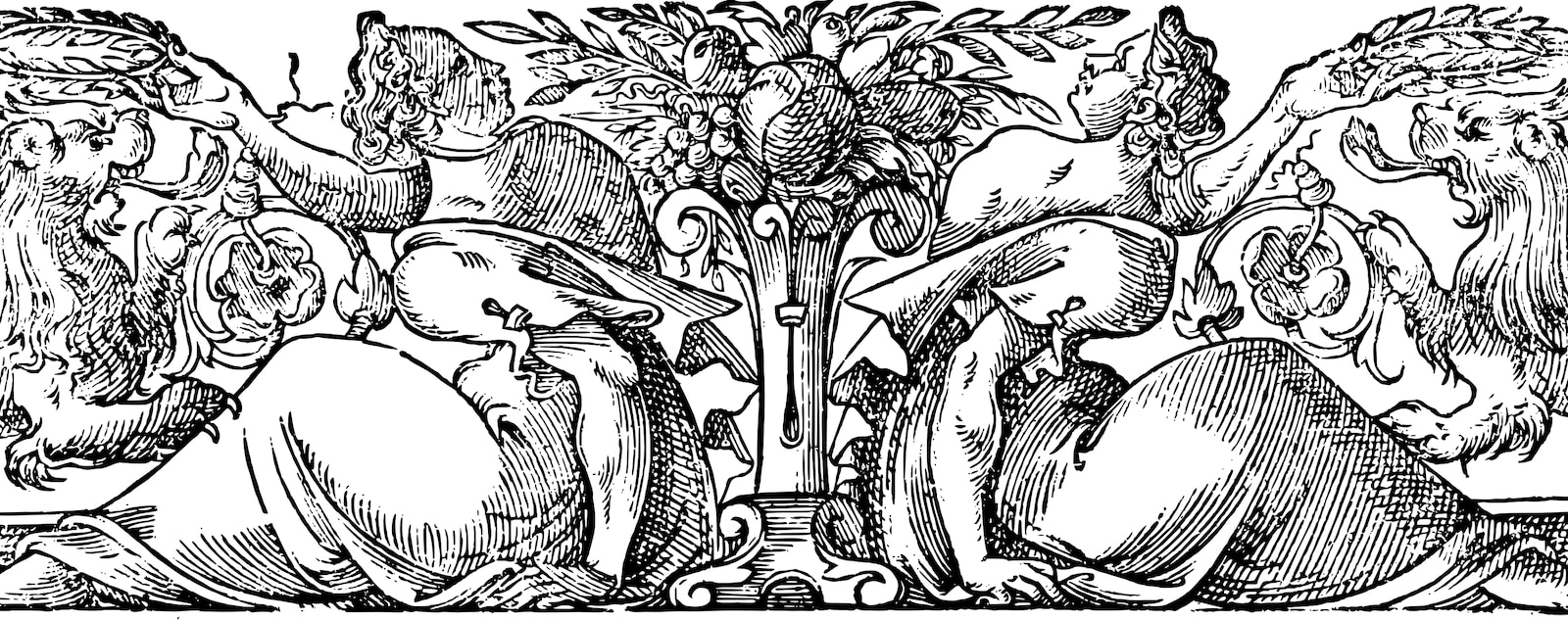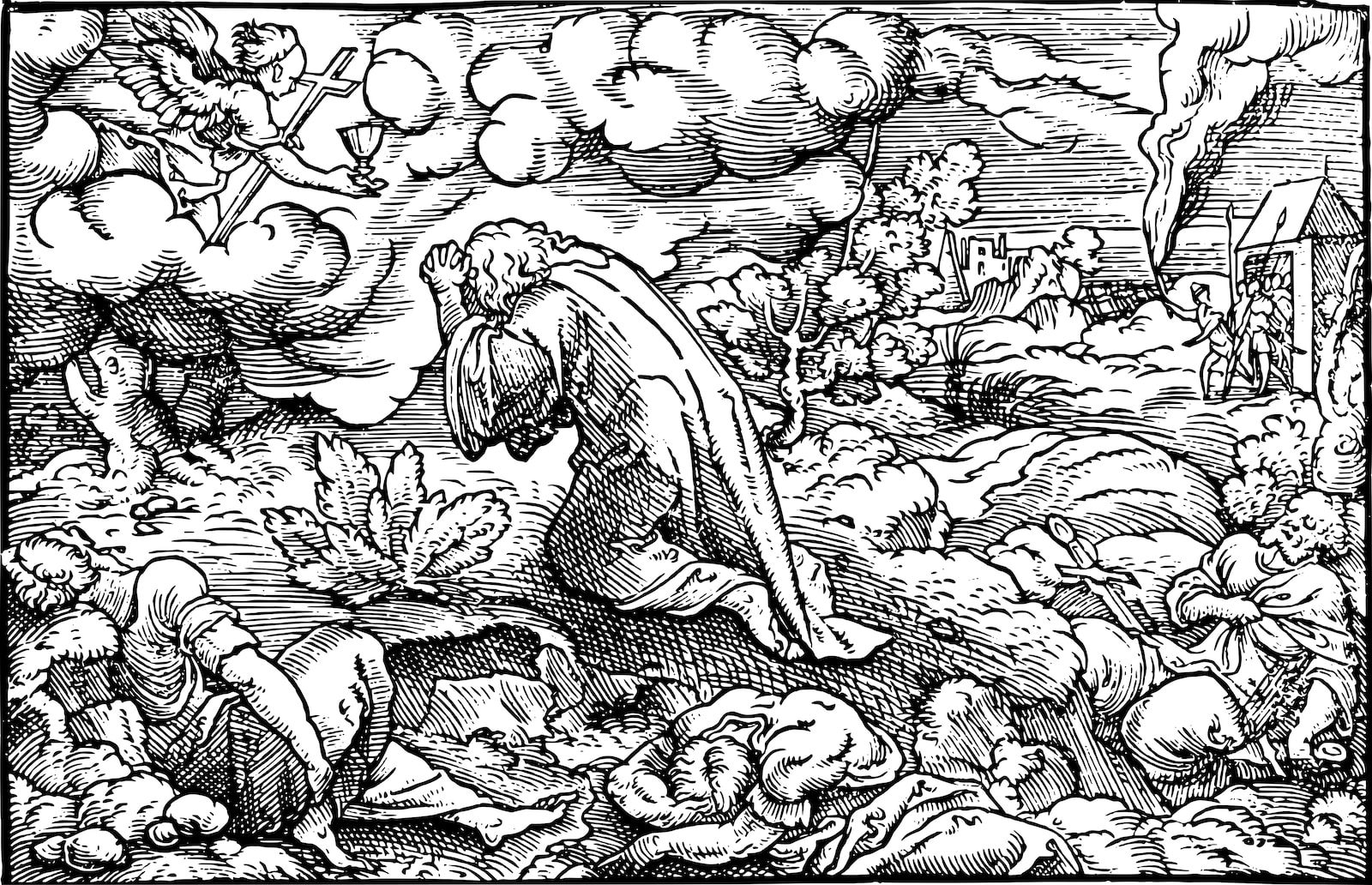
Painting on wood, 75 by 122 cm
Dommuseum Fulda
Things can get lost in translation, and sometimes language has little to do with it. Such is the case with “Christ and the Woman Taken in Adultery,” a piece—or rather a series of pieces—created by the Cranach enterprise. The version housed in the Dommuseum in Fulda, Germany, painted by Lucas Cranach the Elder, circa 1520, is worth considering, but it must be viewed in contrast to later versions copied either by the same artist, his sons, or any of their workshops.
The fact that the patriarch of the artistic family did not paint everything attributed to the name “Cranach” becomes immediately problematic and is important in considering the “Fulda version.”
The elder Cranach was a shrewd businessman in his day, and demand for his work became such that a workshop of skilled artists was necessary to produce copies. The general practice was that less-skilled artists would work on less important parts of the painting, while more crucial details, such as heads and hands, would be overseen by the master, if not personally painted by his hand. Copies continued to be produced by his sons, their workshops, and even followers of the style. Hence, there are several copies of this particular image, each bearing a different look from different hands.
The Fulda version is, however, decidedly different from nearly every subsequent copy, and it may be that the prevailing culture and the Cranach business model affected that image. Germans were not immune to the pagan immodesty which took root in the Italian Renaissance and spread to the Northern Renaissance. What was on one hand a reassessment of the Greek and Roman ideal became, on the other hand, an easy excuse to titillate the viewer, often with nude bodies of mythical gods and goddesses; what was taboo in sacred art suddenly became acceptable in recreating scenes of pagan myths.
Eventually, however, the lines began to blur, even for the family Cranach. One could expect to see in the Cranach portfolio a seductive painting of Venus, sure enough, and there were seemingly countless paintings of the semi-nude Lucretia, who was a Roman figure from dubious antiquity. When copies of “Christ and the Woman Taken in Adultery” became sought after, it seems the temptation to titillate through its particular sin was simply too much.
Nearly all of the late copies show a woman not only caught in the act, but shown in various stages of undress. Nothing is left to the imagination. The strings of her corset are loosened here. The top of her bodice is pulled down there. Once again, the opportunity was not ignored, even when an overarching theme was the reaction to the grievous sins of others. The viewer cannot look away from a scene that has been frozen in time.
If the viewer does not fully understand the seriousness of sin, later versions of the painting also show Christ taking the woman by the arm, as an angry parent would a naughty child. The analogy is correct, but it is severe, and the viewer can’t help but wonder to which precipice the Lord is about to haul her.
In these images, Christ also confronts a rather seamy crowd. There are soldiers, Pharisees, and teachers of the Law, albeit through the lens of the Northern Renaissance. Their faces are defiant toward the woman and Christ Himself. Cranach even leans a bit toward the work of fellow artist Hieronymus Bosch in the brutally-distorted visage of one character. The notion is not lost on the viewer that Christ is here faced with two kinds of ugliness, with two kinds of sin.
What is unfortunate is that a richness of meaning was forfeited when copies were made after the Fulda version.
The crowd, at least, was not changed from the earliest versions of the painting. In the earlier painting, there is an added layer of symbolism subtly painted into the crowd. Each of the men poised to throw rocks is using his left hand. This was clearly understood in Cranach’s day as the “sinister” side, and it labeled the men not simply as sinful, but overtly sinister.
The woman in the Fulda version, by contrast, is depicted as one who is overtly sinful, but not sinister. She is not ugly. She is not disheveled or the least bit undressed, as in later versions. Her ornate dress is trussed up tightly and every clothing detail is in place. We are not allowed to be spectators of sin. Furthermore, the viewer must push through proper decorum to even imagine the effects of her sin.
Christ’s hand is also in a different position, making a very different visual statement. He does not grab her fore-arm as in later versions, but gently holds her hand. This visually takes the meaning from harsh rebuke to loving correction.
However, the biggest difference by far between the early Fulda version and later copies is the position of Christ Jesus Himself. In the Fulda version, He does not face the ugliness of the crowd or look off in some vague direction. Jesus instead confronts the viewer. His direct gaze at us, taken with the painted admonition, “Let him who is without sin among you be the first to throw a stone,” changes everything. We are not allowed to imagine the woman’s sin or judge the menacing crowd. Instead, we are forced to confront our own sin, and the merciful face of our Savior.




